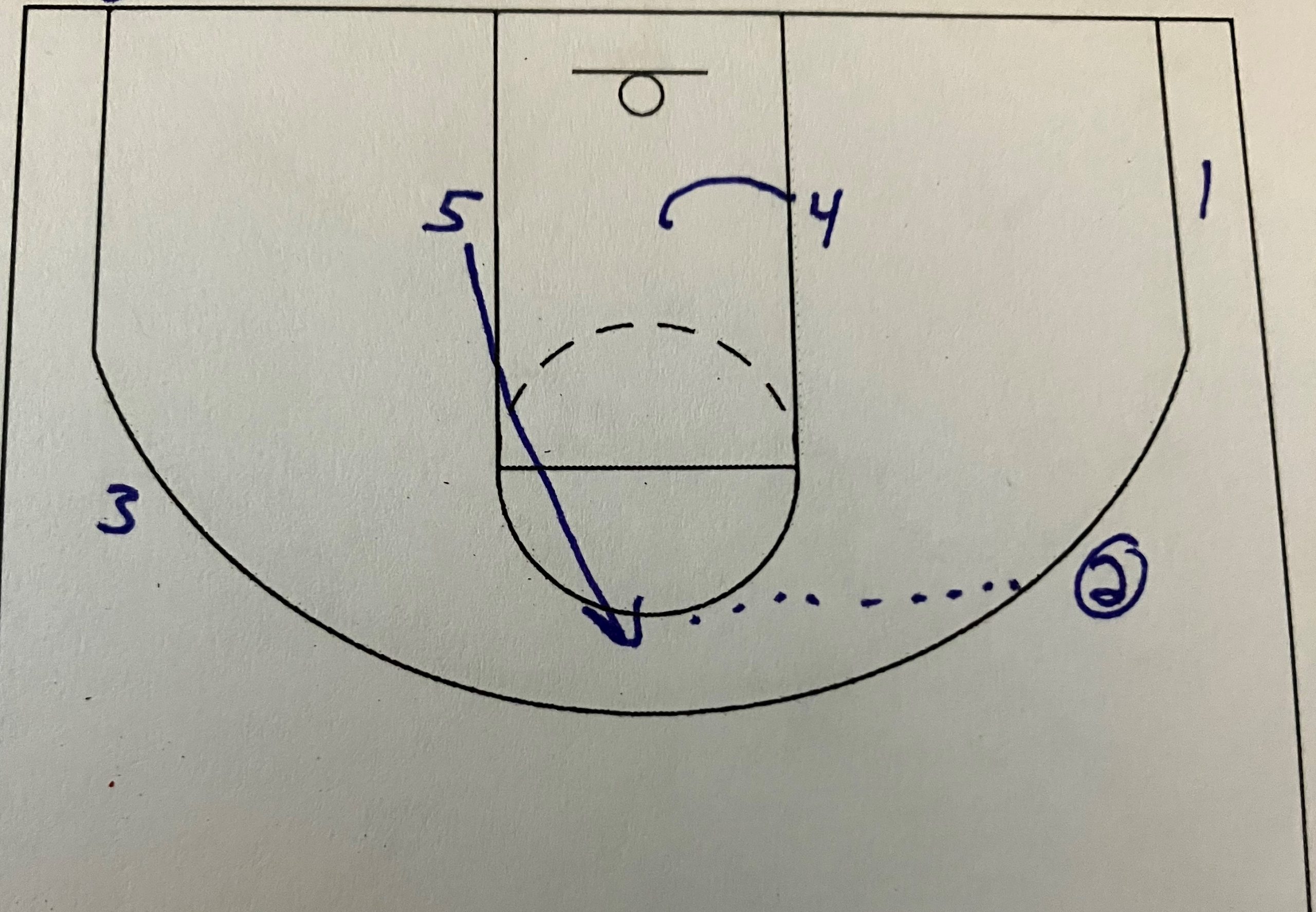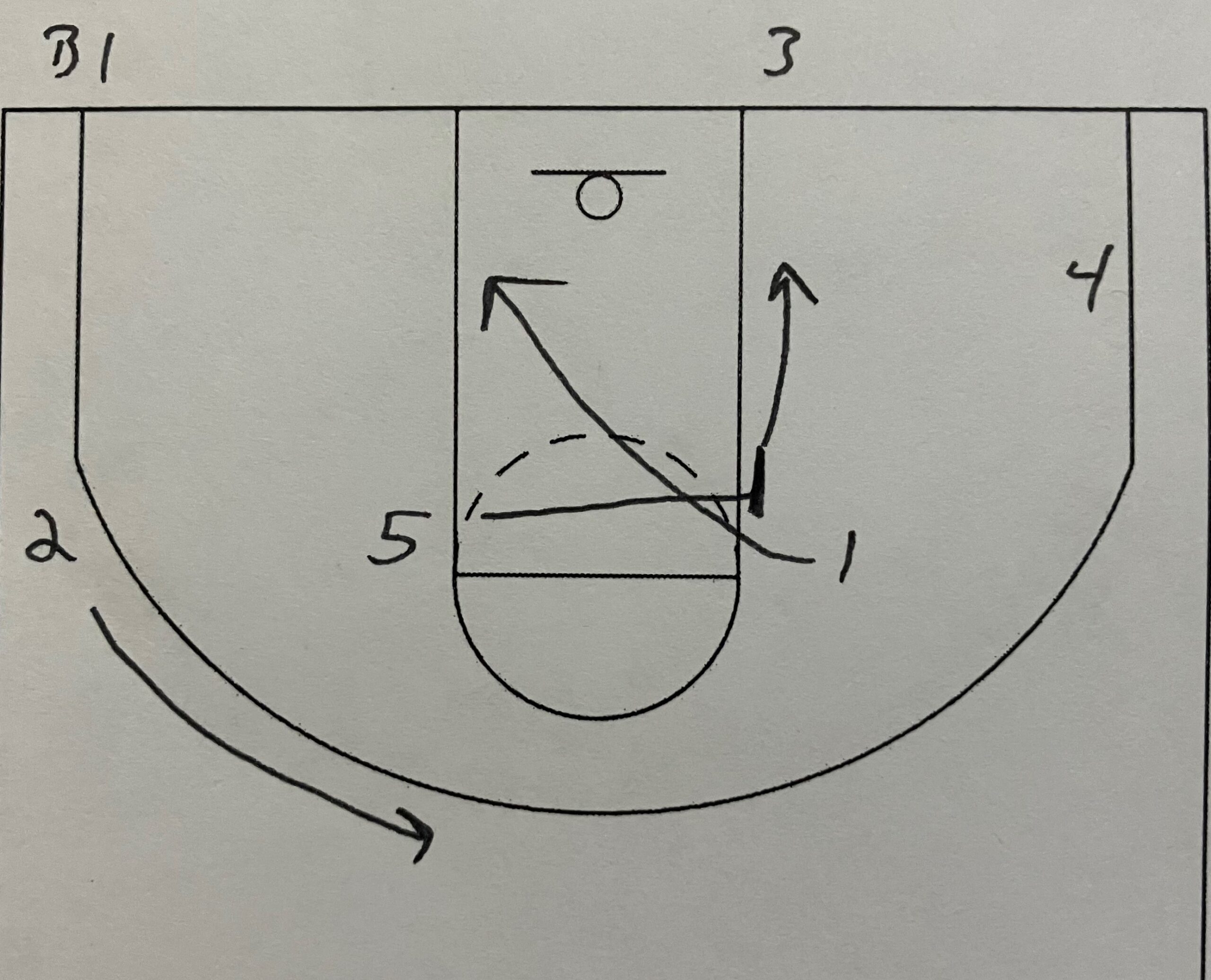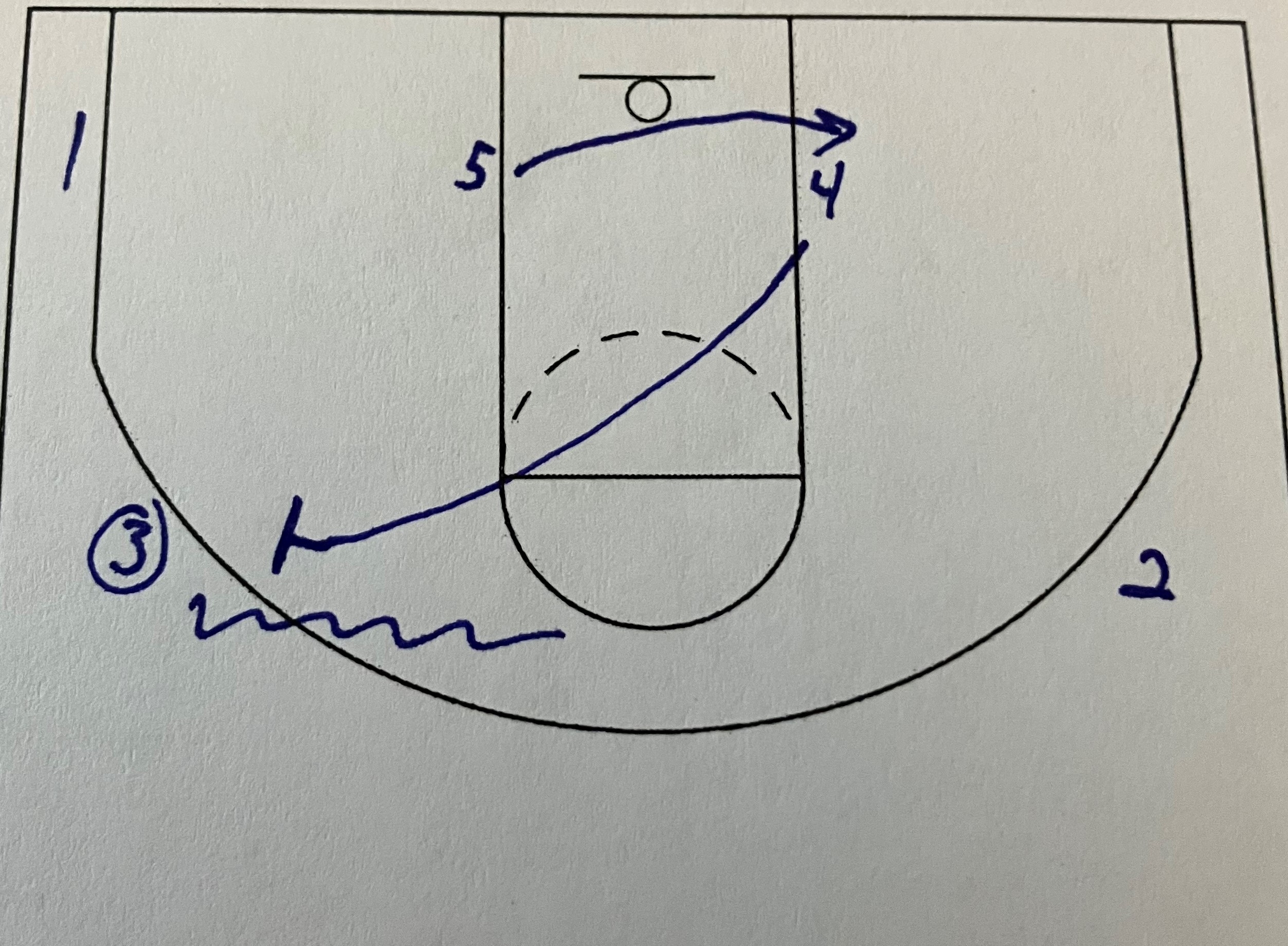A good back to the basket post player is an advantage that is slowly becoming lost in the current game of basketball. So many teams are playing 4 and 5 out with no player staying in the post looking for a post entry pass. They are cutting players in and out of the post but never have one player constantly trying to post up and get the ball.
When a team has a player who is a back to the basket post player, one of the ways to take advantage of the post player is to create isolations with a built in entry pass to get that player easy touches. An understanding of how a team is going to guard a post player will also help to create openings that are hard for a defense to stop.
One of the ways a defense will try and stop a post player is by either 3/4 fronting or full fronting the post. When a defense is overplaying a post player to prevent an entry pass then an offense can pass the ball away and give the post player a chance to turn and seal for an easy entry pass from a different angle. The key is teaching a post player to allow the overplay by the defense so the turn and seal is made easier.
Post Player Turn and Seal
A turn and seal by a post player is a spin that helps to seal the defense on the other side. For instance if the post player is on the right block as a person is looking at the basket. The post player will be posting with their right foot farther towards midcourt as they try to catch a pass from the wing. The defense being in a 3/4 denial position will be on the post players right hip.
A turn and seal is when the post player pivots and moves their left foot around to the middle of the court and turns to put the defender on their left hip. The left arm will come around and help to seal the defender keeping them around the block while the post player now is turned to the middle of the court.
This simple turn and seal can be taught to give a post player an easy way to beat a defender who is overplaying ballside. When an offense can design situations to use the turn and seal to get an easy post entry and basket then it really challenges a defense to stop a post player in a different way.
This play uses the turn and seal to get a high low post to post entry pass. While it does not work every time, it can be used when the defense gets a little too aggressive in trying to defend the straight post entry pass to the block.

The play starts in a box formation with the post players on the block and the wings on the elbows. The guard(2) and forward(3) pop out to the wings and the point(1) enters the ball to one side. It does not matter which side. If the point(1) enters the ball to the forward(3) then everything will flip from the diagrams.
In the diagram above, the point(1) enters the ball to the guard(2) and cuts to the ballside corner. I am overloading the ballside to start with so the turn and seal will be there for the post player.
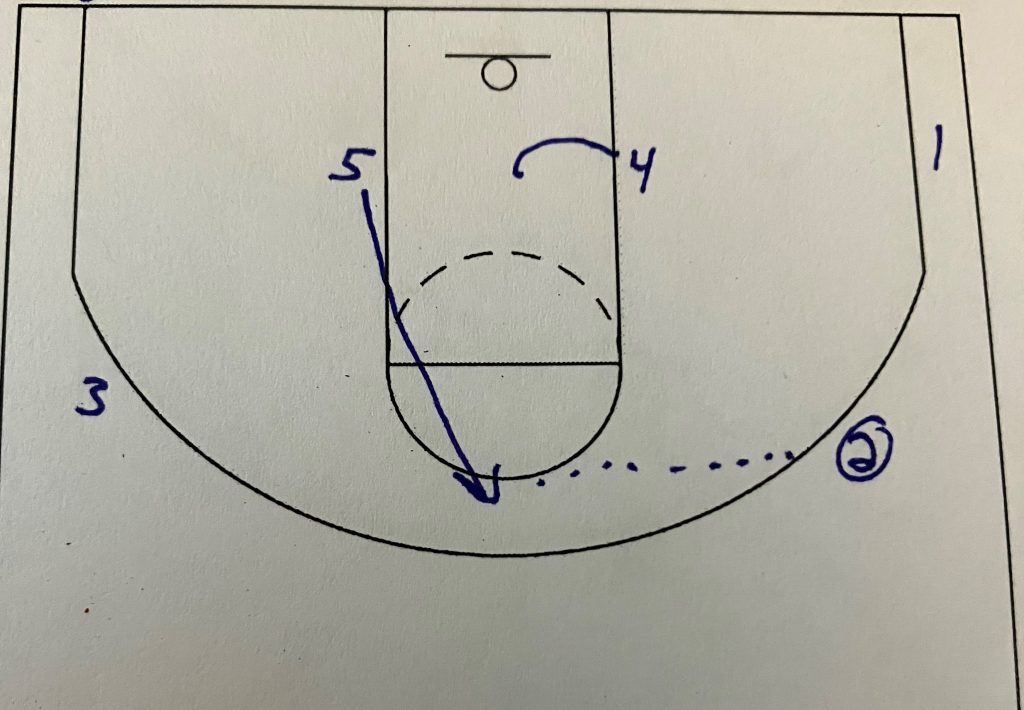
The backside post will flash up to the high post area. In the diagram above, the center(5) flashes to the high post and catches a pass from the guard(2). This is the high low post to post pass the offense is wanting to get.
The big(4) is turning and sealing as mentioned above. The backside help defense has been taken away by overloading the ballside to start. This gives the big(4) the entire backside area to move into with a good turn and seal. This high low post to post pass is usually good for at least one easy layup a game.
Now if the post to post pass is not open then the play will move into the 2nd movement.
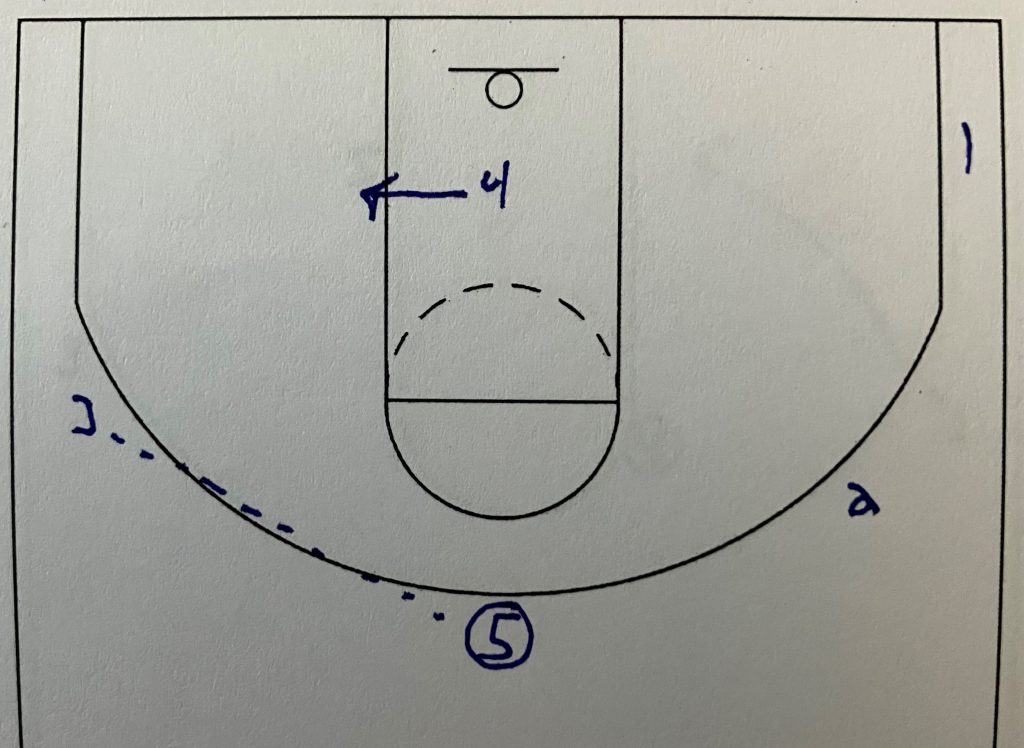
The center(5) swings the ball across to the forward(3). The big(4) follows the ball and tries for another seal and entry pass. This is giving the post player 2 chances to get a good seal to receive the ball. It also gives the offense two different angles to pass the ball to the post player.
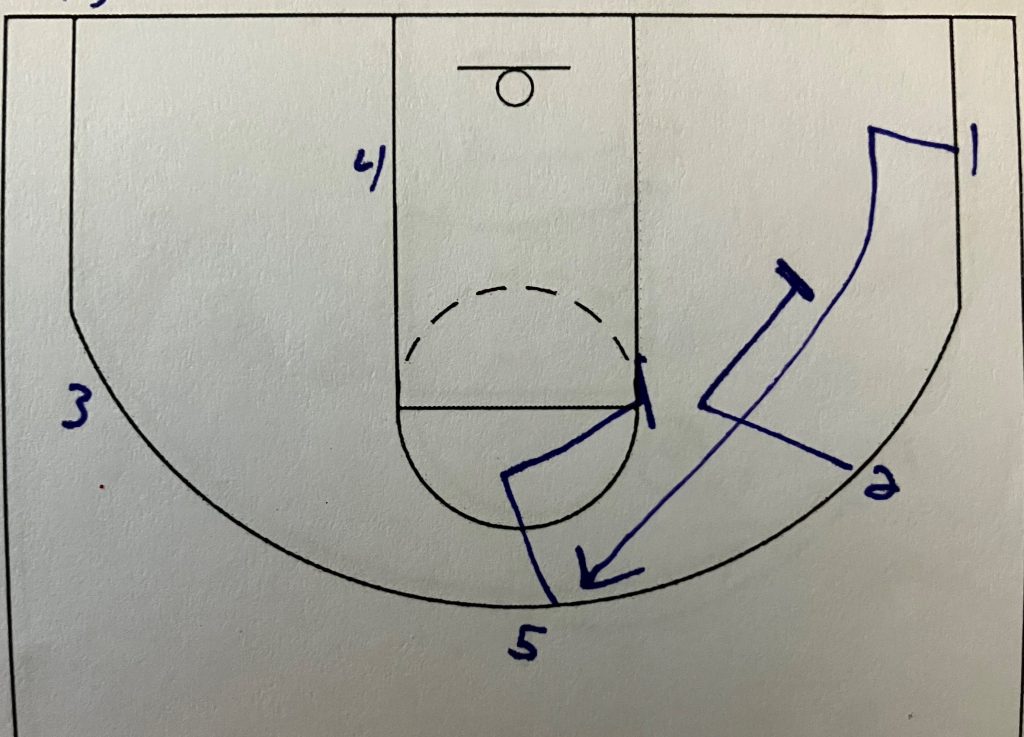
If the post entry does not happen then the center(5) and guard(2) move down and set a double stagger screen for the point(1) to come back up to the top of the key for a catch and shoot 3-point shot. A good defense will have the point(1)’s defender as the post help. The stagger screen can cause problems for the defense because the post help is now having to fight through a double screen.
Because the point(1) defender will be watching the post, they will be slow to recover and closeout to the point(1) at the top of the key. The play is using proper defensive techniques against the defense. The helpside post defender now needs to be helping the post but also close enough to the point(1) coming up off of the baseline. The defender can not do both so the post or the 3-pointer should be open.
Conclusion
A good post isolation can give an offense easy scoring chances. A play working to make the post entry pass easy gives problems to the defense. An offense using proper defensive rules against the defense makes it hard for the defense to stop everything this play is trying to do. Those little openings is all that is needed to get good easy shots out of a simple play.

